With ever-changing heavy-duty engine technology comes greater demand for more durable, higher-performing ancillary products, including oil filters. Modern lubrication systems circulate oil at much higher rates than older-generation engines, so today’s filters must be designed with materials that can withstand tougher working environments while still performing their key role—contaminant control.
John Gaither, director of heavy-duty product engineering for Luber-finer by FRAM Filtration, explains that most modern engines equipped with exhaust gas recirculation (EGR) and selective catalytic reduction (SCR) technologies generate higher levels of organic and inorganic acids, as well as higher amounts of soot in the oil, requiring modern filtration technologies that address these newer challenges.
In addition, modern filters must keep up with extended oil drain intervals, according to engineers at K&N Engineering, as the majority of engine makers have extended intervals to 600 hours on Tier 4 engines with SCR.
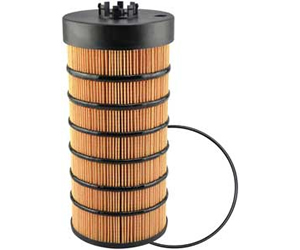 “As with all heavy-duty engines, lube oil filter technology must keep ahead of the trends of extended drain intervals, higher sump temperatures, and complete chemical compatibility with today’s oils and additive packages; all while performing during the vibration, loads and pressures of today’s engine applications,” says Martin Barris, engine liquid and hydraulics product director for Donaldson Co.
“As with all heavy-duty engines, lube oil filter technology must keep ahead of the trends of extended drain intervals, higher sump temperatures, and complete chemical compatibility with today’s oils and additive packages; all while performing during the vibration, loads and pressures of today’s engine applications,” says Martin Barris, engine liquid and hydraulics product director for Donaldson Co.
“Today’s SCR engines are tuned in such a way that less soot is expected to be driven into the lube oil,” he adds. “At the same time, low-ash oils may not have the same capacity to neutralize acids as in the past. This probably means soot isn’t as much of a problem, but total acid number/total base number (TAN/TBN) must be monitored during extended drain intervals. As a result, oil filter technology, in the context of an SCR engine, will focus on engine protection and long service life tailored to the typical mixture of oil contaminants.”
Baldwin Filters’ Farrell Calcaterra, vice president of research and design, explains that filters on today’s emissions-compliant engines are exposed to higher average operating temperatures and ethylene glycol—leading lube filter medias to move away from cellulose to synthetic materials. Lube filters also are moving away from spin-ons toward more environmentally-friendly cartridges.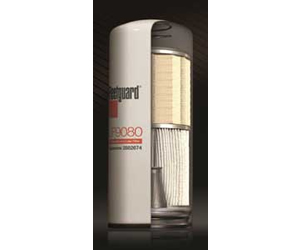
Along with soot and sludge, today’s oil filters must be able to effectively deal with the byproducts of oil degradation, notes Paul Bandoly, manager of technical service and customers training for NAPA Filters, who adds filter designs that incorporate materials such as full synthetic media and high synthetic content cellulose-based media have become common. “Filters like the GoldNAPA XD have designs that manage the way oil flows through the filter assembly so the element has the most effective opportunity to control the soot, sludge and other contamination,” he says.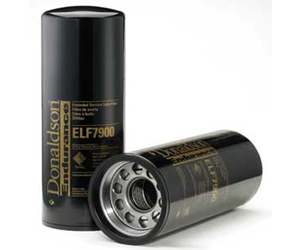
Oil filter selection
With plenty of options to choose from, fleets must do a little homework in order to select the best filters for their respective applications.
“Fleets should use a high quality oil filter that has been tested to meet OE requirements using industry standard test procedures,” said Baldwin’s Calcaterra, who encourages fleets to ask their suppliers to provide performance data when selecting a replacement filter.
Luber-finer’s Gaither recommends that fleets monitor their engine oil analysis data for the appropriate selection of an oil filter. “Fleets should know their engines—whether they are ‘acid challenged’ or ‘soot challenged’—before making a decision to select a filter.”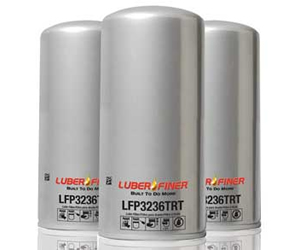
He adds the company’s Time Release Technology (TRT) filters—which address the newer challenges of neutralizing acids in addition to performing their standard job of removing contaminants from the oil—are best for “acid challenged” engines. And extended drain interval filters, like Luber-finer’s Imperial XL lube filters for heavy-duty engines, are made with specially-developed micro-glass or full synthetic lube filters to handle soot and contaminants for extended oil change intervals.
“Keeping an eye on the oil analysis data, understanding an engine’s behavior and intelligently selecting a filter can optimize engine life in addition to service intervals,” Gaither says.
In general, K&N engineers recommend fleets look at the quality of materials and how a filter is constructed. “The K&N HD Oil Filter has premium attributes like synthetic media that stops 99% of harmful contaminants, high dirt holding capacity and filtration efficiency, a plated base plate for corrosion resistance coupled with a double-rolled seal, and a heavy gauge canister for increased fatigue strength from engine oil pump pulsations,” they say. 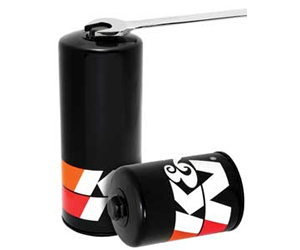
K&N added for fleets that operate in cold climates, its HD filter has excellent cold flow characteristics for engine protection during the critical cold start-up phase.
Ted Loftis, director of engineering for Cummins Filtration, says a filter’s construction materials must be able to withstand the modern engine loads (pressures, flows, vibrations, temperatures, etc.) from the full spectrum of light- to severe-duty applications. “In some cases, this entails the use of synthetic filter media coupled with staunch backing materials,” he says. “The synthetic material can simultaneously provide fine filtration, low resistance to oil flow (especially in cold conditions) and the structural ability to withstand the longer service intervals demanded by some customers.”
Loftis adds that premium filters exhibit features such as “two filters in one container.” For example, one of the filters could clean a small portion of the oil flow and provide very high efficiency and capacity at removing “real-world” contaminants, while the other filter maintains appropriate oil cleanliness of all the oil flowing to key engine components.
“An additional feature for enhanced performance is stabilization of pleated filter media; this helps the filter perform its intended function even better,” he adds, citing one example of pleat stabilization as being “glue beads” placed on the outer diameter of pleated media packs.
Features to manage oil flow (such as ensuring the proper flow split between two filters in one container) also are utilized—an example is Cummins’ Fleetguard Venturi Nozzle, Loftis says. In some applications, auxiliary filtration is added to further enhance lube oil filtration, for example, in the case of a centrifuge “bypass” filter that is generally used to remove soot from engine oil. 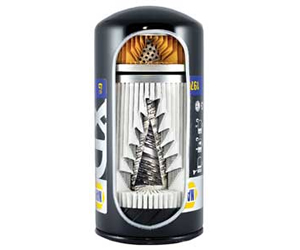
According to Donaldson’s Barris, lube oil filter media is commonly made of pleated cellulose paper, providing good filtration and capacity for general contaminants, while full synthetic and cellulose/synthetic blend media provide enhanced performance. “For the most stringent lube filtration requirements, Donaldson Synteq Media, our full synthetic media, provides enhanced durability for extended drain intervals while maintaining or improving filter efficiency and capacity at a lower restriction than other media types,” Barris says. “The result is better engine protection for a longer period of time while minimizing time spent in bypass.”
On a final note, when comparing features of modern oil filters, fleets must make sure they use an “apples to apples” application review, adds NAPA’s Bandoly. “Make sure you are comparing products that are designed and recommended for the same application. It is not uncommon for there to be (multiple) options for some applications—options based on operating conditions, fleet objectives and other similar considerations.”
Fleet best practices
Once a fleet has selected the proper oil filtration for its intended application, there is still more to factor in, particularly oil analysis, filter handling and storage, and oil change intervals.
Baldwin’s Calcaterra advises that fleets adhere to OEM-recommended change intervals, and that if a fleet wants to extend its oil drain interval, it should work with oil and filter suppliers.
“The TBN for oil, its acid-neutralizing reserve, degrades over time and miles, especially in modern diesel engines that use EGR. The TAN measures the acidity level of the oil,” explains Luber-finer’s Gaither. “Any decision regarding extending oil drain intervals must be based on oil analysis and adherence to OEM criteria for acceptable oil operating properties. Operating properties may include, but are not limited to, TBN, viscosity and fuel dilution.”
Fleets should ensure the oil analysis program is practiced across the entire organization, and that good documentation and record keeping support the effort, says K&N. Fleets must then review the results and look for trends that point to problem areas. Investigating those problem areas can educate fleets on what is happening that might lead to costly and disruptive equipment downtime, the company adds.
NAPA’s Bandoly touts good management of the filter inventory—keeping it clean, new and undamaged. “Leave filters in their factory packaging until installation,” he says. “Whether shrink-wrapped or boxed, make sure the factory packaging remains intact and protects the filter. A dented or damaged filter should never be installed.”
He also encourages fleets to use the materials and support available from filter suppliers to make sure everyone, even the most experienced technician, has been trained on proper filter selection and installation. “In-field training, online training and even factory training are a key part of eliminating the consequences of filters being installed incorrectly or by an un-recommended ‘technique.’ Sit down with your filter supplier at least once a year…to review product use, recommendations, and anything new or different that can or does impact the fleet.”
Another oil filter tip is to avoid storing new filters in a humid environment for extended periods of time; instead keep them dry, according to Donaldson’s Barris, who adds it also is best to avoid allowing the filter’s thread plate to contact a dusty surface, and to always apply the recommended torque or installation turns to the new filter.
Today’s engine oil filters are up to the task of protecting a fleet’s hotter running engines—with the right selection and proper maintenance, fleets can work with their suppliers to get the most out of these vital components.




